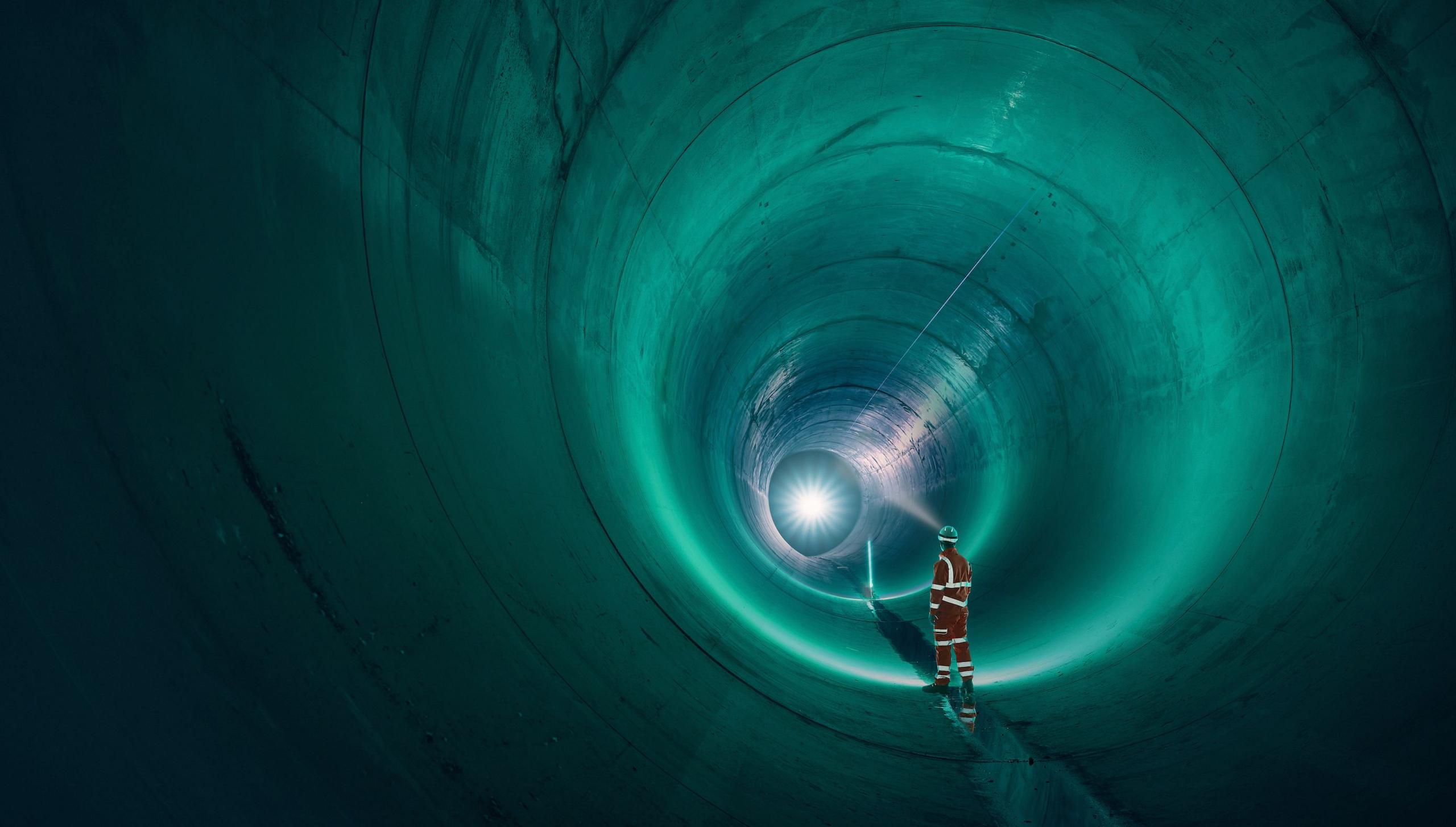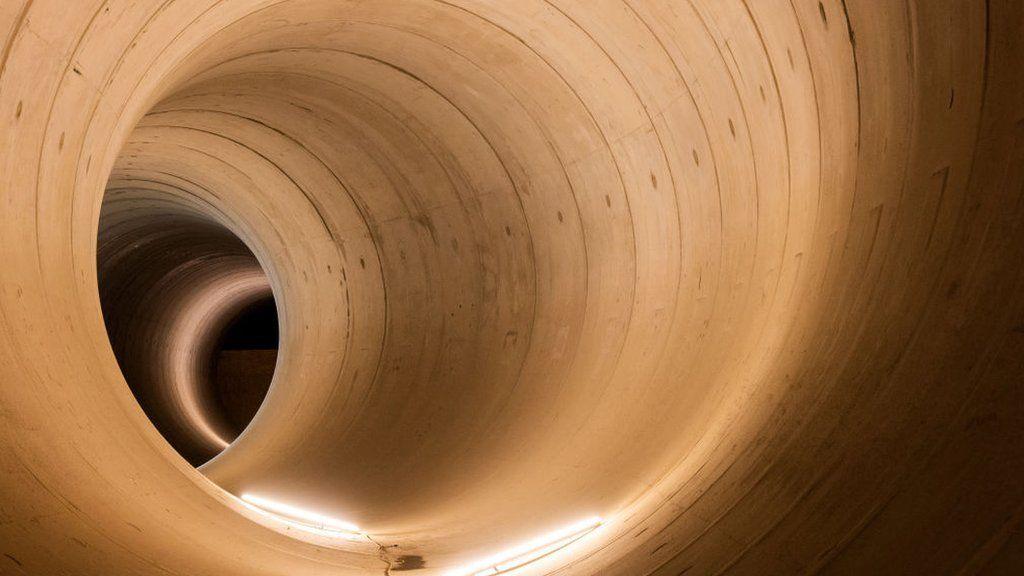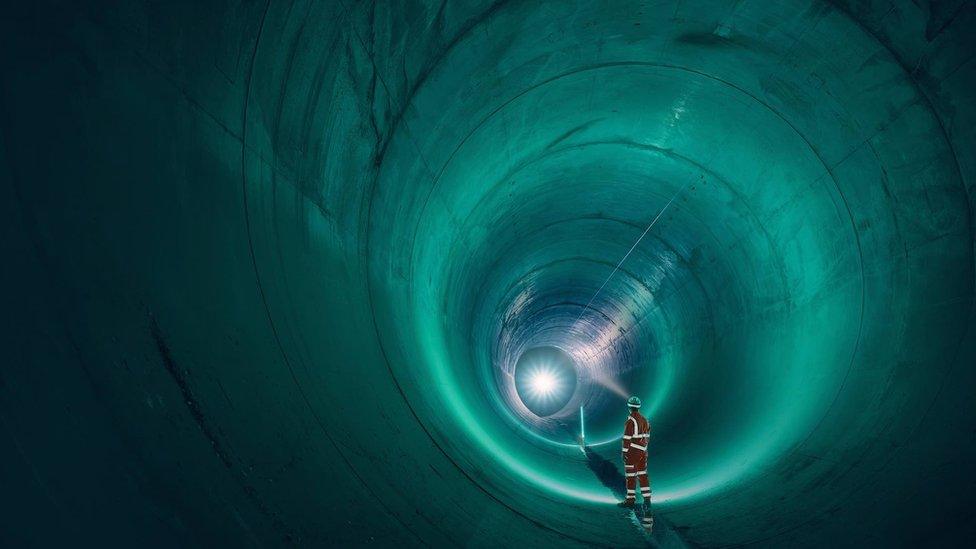London's new super sewer now fully connected

The tunnel is wide enough to fit three London buses side by side
- Published
London's new £5bn super sewer has been fully connected and is already stopping half a million tonnes of sewage from entering the River Thames, the firm behind it has said.
After 10 years of construction work, the last of the 21 connections of the Thames Tideway Tunnel was made to the city's Victorian sewage system.
The 16-mile (25km) pipe will divert 34 of the most-polluting sewage outflows that have been discharging into the Thames.
Tideway chief executive Andy Mitchell said: "This is another significant step forward – with this final connection complete, the super sewer is fully up and running and protecting the Thames."
London's combined sewage system handles human waste and rain runoff together, but the capital's population has outgrown the infrastructure.
The new system is expected to stop 95% of the sewage spills that previously would have polluted the river.
Take a look inside London's new "super sewer"
Connections have been made at locations including the starting point of the University Boat Race at Putney Embankment; Chelsea and Victoria Embankments; Blackfriars Bridge in the heart of the City of London; and King Edward Memorial Park in Wapping.
The Thames Tideway Tunnel connects with the 4.2-mile (6.9km) Lee Tunnel, an existing Thames Water asset, creating the London Tideway Tunnel system.
The infrastructure project, funded by Thames Water customers, will reduce sewage discharges into the Thames and create lasting benefits for biodiversity, recreation and public health, a Tideway spokesperson said.
The project is not yet fully complete, as it will still need to be tested in storm conditions over the coming months.
Thames Water will then take over the operation of the system.
Environment Secretary Steve Reed described the tunnel as "an example of the kind of infrastructure investment needed to clean up our waterways around the country", adding: "This government is determined to clean up our polluted rivers, lakes and seas – and that includes the capital's iconic Thames river."
London Mayor Sir Sadiq Khan said it was an "important milestone" towards cleaning up London's waterways.
Listen to the best of BBC Radio London on Sounds and follow BBC London on Facebook, external, X, external and Instagram, external. Send your story ideas to hello.bbclondon@bbc.co.uk, external
- Published14 October 2024

- Published12 February 2024

- Published27 March 2024
